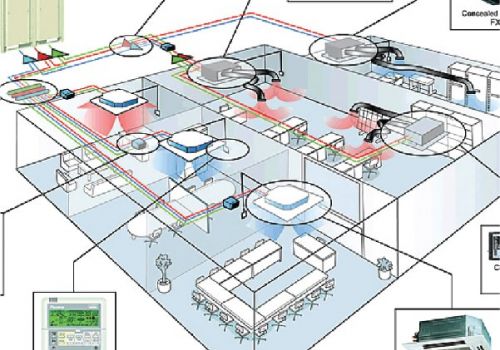Canada new
.png?1695961092245)
History of Canada's formation
Canada's history began with the appearance of the ancient Paleo-Indian tribe thousands of years ago. Characteristics of Canadian Aboriginal society include living areas, agricultural areas, a complex social stratification structure, and the formation of trade networks. This was an early time in Canadian history when the Indians developed and built a new, rich and colorful Canadian culture. Archaeological researchers have discovered that some of these cultures had already collapsed by the time European explorers arrived in the late fifteenth and early sixteenth centuries.
In ancient times, in Canada there was a hierarchy between social classes. This incident lasted until Europeans appeared and discovered America, which changed and destroyed Indian civilization. From now on, Canadian history entered a new phase.
Everything was not significant until the late 15th century, when explorers from England and France appeared here to explore and settle. This turned Canada into a colony of France in 1763, after which France ceded all of its colonies to England in North America.
Important milestones in the history of Canada's formation:
In 1867, the Constitution Act officially declared Canadian Confederation consisting of four provinces: Ontario, Quebec, Nova Scotia, and New Brunswick.
In 1870, the province of Manitoba was formed.
In 1866, British Columbia and Vancouver Island were incorporated, and in 1871 joined Confederation.
In 1873, Prince Edward Island joined the Canadian Confederation.
In 1898, during the Klondike Gold Rush in the Northwest Territories, the Canadian government created the Yukon Territory.
In 1905, Alberta and Saskatchewan were formed due to large numbers of immigrants from mainland Europe settling on the prairies.
In 1931, an important event marked in Canadian history: Canada officially became an independent country, no longer dependent on the United Kingdom. This marked the beginning of a new age for Canada.
In 1965, thanks to economic growth combined with the policies of Liberal governments, Canada formed a new identity, expressed through the adoption of the maple leaf flag - the current Canadian national symbol.
In 1969, bilingualism was officially implemented: English and French.
In 1971, the institution of cultural pluralism was officially established.
In 1982, another series of constitutional conferences resulted in the Canadian constitution breaking with the British, and creating the Canadian Charter of Rights and Freedoms.
In 1989, the Canadian Government approved a free trade agreement with the United States.
In 1990, Canada participated in the Gulf War as part of the US-led coalition force, and operated in the UNPROFOR peacekeeping mission in the former Yugoslavia.
In 1993, Mulroney resigned as Prime Minister, Kim Campbell took power and became Canada's first female prime minister. But she only held the position of acting Prime Minister for only a few months.
In 1995, the Quebec Government held a second general election, but only 49.4% of the votes supported the proposal for sovereignty and independence. In 1998, the Supreme Court of Canada overturned this decision.
In 1999, Nunavut became Canada's third territory after a series of negotiations with the federal government.
Canada sent troops to Afghanistan in 2001, but refused to participate in the US-led invasion of Iraq in 2003.
In 2009, the Canadian economy suffered losses in the Great Recession, but has recovered, but still quite modestly.
In 2011, Canadian forces participated in the NATO-led intervention in the Libyan Civil War.
Today, Canada is a multi-ethnic, multicultural country. Canada has become one of the most powerful countries in the world.
Geographical location
Learning about Canada through its geographical location allows us to see that Canada is an extremely large country because its territory occupies most of the North American continent, sharing a land border with the United States to the south and south. The US state of Alaska is in the northwest. Canada stretches from the Atlantic Ocean in the east to the Pacific Ocean in the west; to the north is the Arctic Ocean. Having said this, you must have answered the question of which continent Canada belongs to, right?
Canada also has extensive maritime terrain, with the world's longest coastline at 243,042 km. Canada's physical geography is very diverse. Woodland habitats are common throughout the country, and the relatively flat Canadian prairies of the southwest provide favorable conditions for productive agriculture.
Provinces and territories in Canada
Canada consists of 10 provinces and 3 territories, which can be divided into the following 5 main regions:
Central region: includes Quebec and Ontario.
Eastern region: also known as the Atlantic region, includes the provinces of Newfoundland and Labrador, Nova Scotia, New Brunswich and Prince Edward Island.
Western Region: includes large parts of Alberta and British Columbia.
Northern Region: includes 3 territories – Nunavut, Yukon and Northwest Territories.
Prairie Region: includes Manitoba, Saskatchewan and parts of Alberta.
Each province and territory will have its own capital and government apparatus.
Area of Canada
Canada's territorial area is 9,984,670 square kilometers. Calculated by total area (including coastal areas), Canada is the second largest country in the world, behind Russia. If only counting land area, Canada ranks fourth, because this country has the largest proportion of freshwater lakes in the world. Of Canada's thirteen provinces and territories, only two, Alberta and Saskatchewan, are landlocked, while the remaining eleven provinces all have direct borders with one of the three oceans.
Canada's population
It is estimated that by the second quarter of 2021, Canada's population is about 38,246,108 people - ranking 37th worldwide. Population density is about 3.92 people/km2. Canada is considered one of the countries with the lowest population density in the world.
Approximately 80% of Canadians live in urban areas concentrated in Quebec, British Columbia, and Alberta. Like other developed countries, Canada is experiencing an aging population, with more people retiring and fewer people of working age. In 2006, the average age of Canadian workers was 39.5; In 2011, this number increased to approximately 39.9. In 2013, the average life expectancy of Canadians was 81 years.
Meanwhile, the statistics in 2016 were about 35,151,728 people. Of these, 32% are of Canadian origin; 18.3% are British; 13.9% are Scottish; 3.6% are French, 13.4% are Irish, etc.
Thanks to the Government's economic and family reunification policies, Canada is currently one of the countries with the highest immigration rates in the world. Large metropolitan areas such as Toronto, Montreal and Vancouver are the choices of most new immigrants. Canada is a country that accepts a large number of refugees, accounting for more than 10% of global refugee resettlement each year.
Related posts

What You Need To Prepare When Studying Abroad In Canada
Determine majors, levels and admission requirements at schools What major do you plan to study in Ca
Read more
Cambrian College
Public college located in Sudbury - Ontario
Read more
EMC School
Academy of English, Mathematics and Coding school located in Toronto - Ontario
Read more
Columbia College
Independent, non-profit college in Vancouver - British Columbia
Read more
Algonquin College
Public college located in Ottawa - the capital city of Canada
Read more
Southern Alberta Institute of Technology
Public college located in Calgary - Alberta
Read more
Columbia International College
Largest Canadian boarding high school located in Hamilton, Ontario
Read more
Douglas College
Largest public college in British Columbia
Read more
Scholarships
Read more
University of Toronto
No.1 University in Canada located in Toronto - Ontario
Read more1. Our services and your successes
8. Rotman School of Arts and Sciences
11. Columbia International College
12. What You Need To Prepare When Studying Abroad In Canada
13. Southern Alberta Institute of Technology
14. What Do You Know About Canada?
20. Kwantlen Polytechnic University (KPU)
Sign up for a consultation
Latest orders

Tokutei orders – Car maintenance
| Amount: | 02 |
| Wage: | 19 man |
| Place: | Shimane, Japan |

Recruitment for the position of Project Estimator.
| Amount: | 02 |
| Wage: | Negotiable according to capacity |
| Place: | Working in the country |

Recruiting for the position of Equipment Design
| Amount: | 02 |
| Wage: | 10,000,000 - 16,000,000VND |
| Place: | Working in the country |

Recruiting for the position of Handling structural design drawings
| Amount: | 03 |
| Wage: | 10,000,000 - 16,000,000 VND |
| Place: | Working in the country |

Recruiting for the position of Architectural design drawing processing
| Amount: | 07 |
| Wage: | 10,000,000 - 16,000,000VND |
| Place: | Working in the country |

Tokutei orders – Car maintenance
| Amount: | 01 |
| Wage: | 21 man |
| Place: | Kyoto, Japan |

LIST OF TOKUTEI ORDERS
| Amount: | 50 |
| Wage: | ~160,000 - 230,000 yen/month |
| Place: | Japan |

Mechanical
| Amount: | 6 |
| Wage: | 32 million VND/month |
| Place: | Kyoto, Japan |

Frozen food processing
| Amount: | 25 |
| Wage: | NT$22,500/month, excluding overtime |
| Place: | Taichung |

PACKAGING PRODUCTS
| Amount: | 40 |
| Wage: | Basic salary: 800 - 900 EUR/month |
| Place: | City. Warsaw, Mazowieckie Province, Poland |



